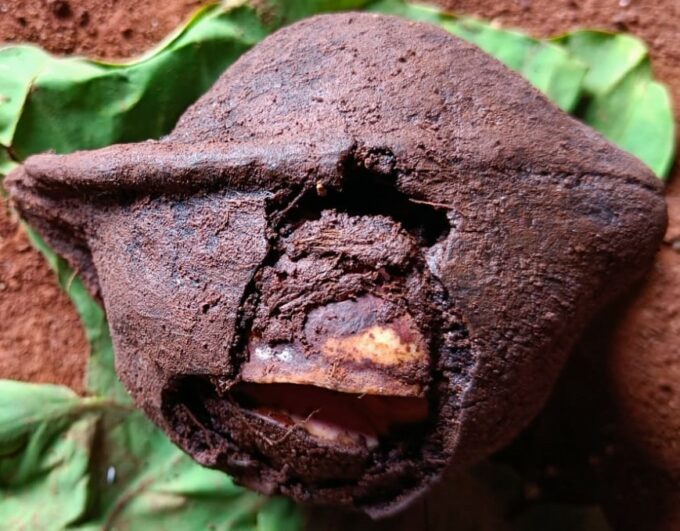Numeral classifiers in the Benue Congo languages
Funded by:
Deutsche Forschungsgemeinschaft (DFG)
Duration: February 2023—January 2026 (03 years)
The NuClaBA project investigates the practice of counting in a number of languages in Cameroon and Nigeria. A more detailed description is found here. If you would like to tell us how numeral classifiers work in your language, please fill in this English or French questionnaire and send it to us by e-mail.
When counting certain objects, an additional element is required and selected according to the haptic criteria of the enumerated noun that are inherent to the language.
In Tiv, a Bantoid language spoken in Nigeria, for example, the item ágbēndé ‘muscle’ is required to count objects such as ‘kola nuts’, while the items ásāŋgē ‘grain’ is required for counting letters, òr ‘person’ for counting bees as illustrated below with ‘kola nuts’.
1. ágbēndé á gô átár (Tiv) muscle.CLF ASS kola.nut three ‘three (pod of) kola nuts’
In Ngəmba, to count kola nuts in pods, tǎ ’roundish’ or ŋgɛ̀ ‘pod’ are required as shown below. The additional item ŋgœ̀m ‘grain’ is required for objects such as ‘bees’, mbaŋ ‘seed, kernel’ for objects like ‘palmnuts’, while unlike Tiv, no additional item will be required for counting objects such ‘letters’.
2. tàʔ tǎ nə́pphyœ́ (Ngəmba) one roundish.CLF kola.nut ‘one (pod of) kola nut’

tǎ/ŋgɛ̀ nəpphyœ
‘kola nut pod‘
(Ngəmba)

nətǒ mbaŋ tét
‘three palmnuts’
(Ngəmba)

òr ù ìyóú mɔ̌m
‘one (person of) bee’ (Tiv)
tàʔ ŋgœ̀m ŋwáʔ
‘one (grain of) bee’ (Ngəmba)


November 24, 2023 at 13:28
Projet très intéressant, bien illustré, très bien mené. Les images sont très jolies aussi.
November 30, 2023 at 17:23
Nous vous remercions de l’intérêt que vous portez à notre projet. N’hésitez pas à faire une contribution régulière dans le menu “Quizz”.
November 15, 2023 at 23:34
Great project here!
November 15, 2023 at 23:35
Thanks!